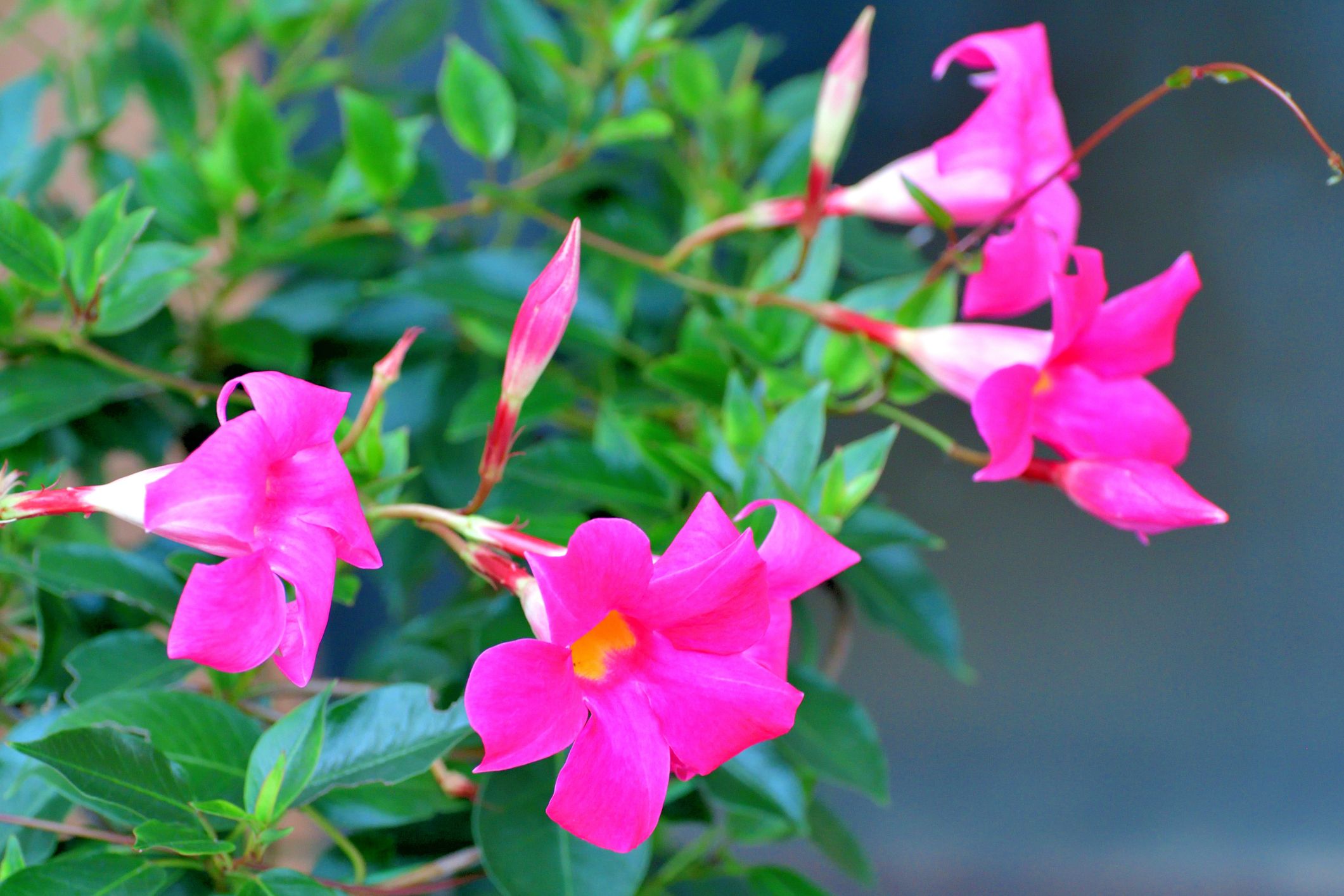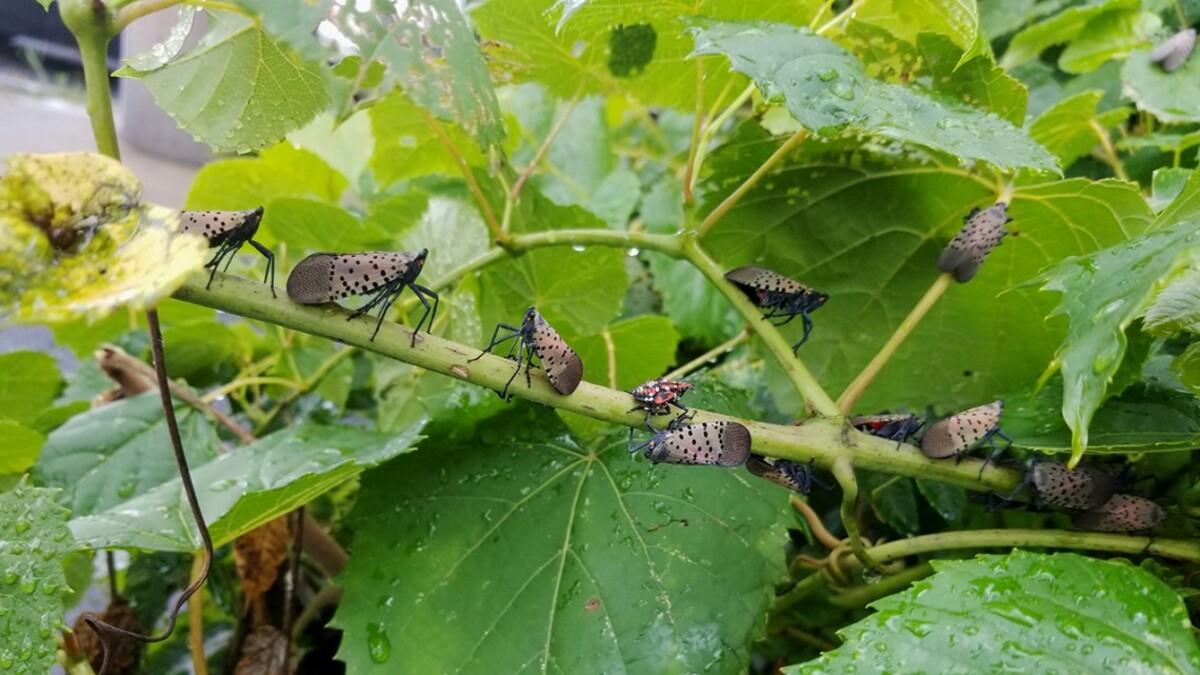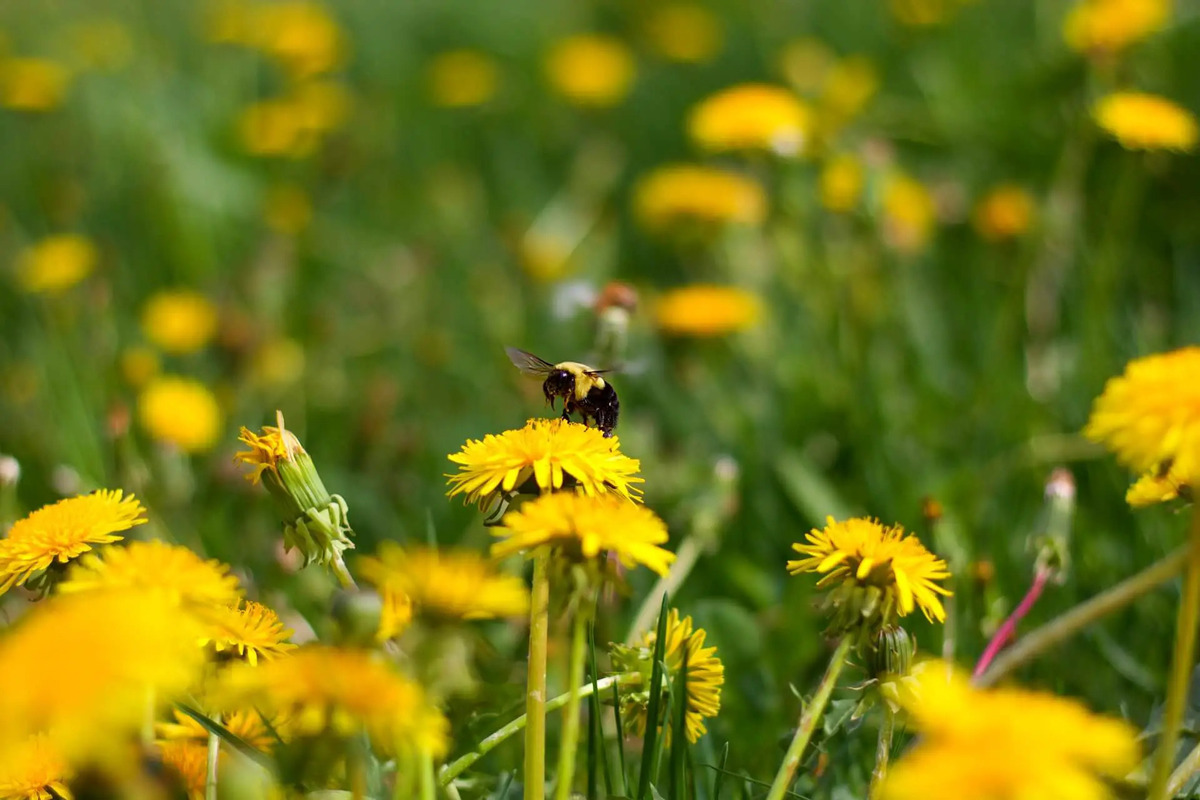Home>Types of Gardening>Ornamental Gardening>What Flowers Like Full Sun


Ornamental Gardening
What Flowers Like Full Sun
Modified: January 22, 2024
Looking for beautiful flowers that thrive in full sun? Explore our guide on ornamental gardening and discover the perfect plants to brighten up your outdoor space.
(Many of the links in this article redirect to a specific reviewed product. Your purchase of these products through affiliate links helps to generate commission for Chicagolandgardening.com, at no extra cost. Learn more)
Table of Contents
Introduction
Welcome to the world of ornamental gardening, where beauty and nature intertwine to create a stunning display of vibrant colors and fragrant blooms. As an avid gardener, you understand the joy and satisfaction of transforming a patch of soil into a picturesque oasis. And when it comes to selecting the perfect flowers for your garden, understanding their sunlight requirements is crucial.
Full sun, with its abundant and direct sunlight, provides an ideal environment for many flowering plants to thrive. The right combination of sunlight, soil, and proper care can result in a breathtaking display of blooms that will make your garden the envy of the neighborhood.
In this article, we will delve into the world of flowers that love basking in the glow of the sun. We will explore the importance of full sun for flowers, factors to consider when selecting flowers that thrive in full sun, and reveal the top 10 flowers that are the perfect fit for this sun-drenched environment. Additionally, we will offer essential tips for caring for flowers in full sun and highlight common mistakes to avoid.
Whether you have a sprawling garden or a tiny balcony, this article will provide you with the knowledge and inspiration to create a flourishing display of flowers that thrive in full sun. So, grab your gardening gloves and let’s dive into the fascinating world of ornamental gardening!
Importance of Full Sun for Flowers
When it comes to ornamental gardening, sunlight plays a crucial role in the growth and development of flowers. Full sun refers to an area that receives at least six hours of direct sunlight per day. This ample exposure to sunlight is essential for flowers to thrive and produce an abundance of blooms. Here are a few reasons why full sun is important for flowers:
- Optimal Photosynthesis: Sunlight is the primary source of energy for plants. Through the process of photosynthesis, plants convert sunlight into chemical energy, allowing them to grow and produce vital nutrients. Flowers that receive ample sunlight can carry out efficient photosynthesis, resulting in healthier and more vibrant blooms.
- Strong Stem and Foliage Development: Adequate sunlight helps promote robust stem and foliage growth. Sunlight stimulates cell elongation, which leads to sturdy stems that can support the weight of flowers. Additionally, exposure to sunlight helps plants produce more chlorophyll, which enhances their green color and increases their ability to convert sunlight into energy.
- Abundant Flowering: Flowers need ample energy to produce blossoms. Sunlight provides the necessary energy for flowers to undergo the process of flowering. Plants that receive full sun tend to produce more blooms and have extended flowering periods, resulting in a visually stunning and long-lasting display.
- Enhanced Color and Fragrance: Sunlight is responsible for enhancing the pigmentation of flowers, leading to more vivid and vibrant colors. Additionally, exposure to sunlight can intensify the production of essential oils, resulting in flowers with stronger fragrances.
- Improved Disease Resistance: Full sun exposure can help reduce the risk of diseases in flowers. Sunlight aids in drying out the foliage, making it less susceptible to fungal infections. It also helps maintain proper airflow, preventing the development of moisture-related diseases.
Understanding the importance of full sun for flowering plants will not only guide your plant selection but also allow you to provide the optimal growing conditions for a flourishing garden. Now that we’ve established the significance of full sun, let’s explore the factors to consider when selecting flowers that thrive in this bright and sunny environment.
Factors to Consider for Flowers that Like Full Sun
Choosing the right flowers for your full sun garden involves considering several important factors. By understanding these factors, you can ensure that the flowers you select will thrive in the bright and sunny conditions. Here are the key factors to consider when choosing flowers that love full sun:
- Sunlight Requirements: While flowers that thrive in full sun generally require at least six hours of direct sunlight per day, some may have specific preferences for partial shade or filtered sunlight. Be sure to check the sunlight requirements of each flower variety you are considering to ensure a perfect match for your garden.
- Climate Compatibility: Different flowers have varying temperature and humidity preferences. Consider your climate and choose flowers that are well-suited to the conditions in your area. Some flowers can handle hot and dry climates, while others may prefer more moderate temperatures.
- Soil Type and Drainage: Assess the soil in your garden to determine its type and drainage capabilities. Most flowers that love full sun thrive in well-draining soil that is rich in organic matter. If your soil is heavy or compacted, consider amending it with compost or other organic materials to improve drainage and nutrient content.
- Watering Needs: Flowers in full sun often require regular watering to combat the drying effects of sunlight. Consider the watering needs of the flowers you are considering and ensure that you can provide them with adequate moisture. Installing a drip irrigation system or mulching the soil can help retain moisture and reduce water evaporation.
- Disease and Pest Resistance: Some flowers are more resistant to diseases and pests than others. Research the disease and pest susceptibility of the flowers you are interested in and choose varieties known for their resistance. This will help minimize the need for chemical interventions and make your gardening experience more enjoyable.
- Blooming Season: Consider the flowering season of the flowers you are selecting. Some plants bloom early in the spring, while others bloom in the summer or fall. By choosing a combination of flowers with varying blooming periods, you can create an ever-changing and visually appealing garden throughout the year.
By taking these factors into account, you can ensure that the flowers you choose for your full sun garden are well-suited to the conditions and will have the best chance of thriving. Now that you have a better understanding of the factors to consider, let’s explore the top 10 flowers that are well-suited for full sun environments.
Top 10 Flowers that Thrive in Full Sun
Are you ready to fill your garden with a dazzling array of flowers that thrive in full sun? Look no further! Here is a curated list of the top 10 flowers that are well-known for their ability to flourish in bright and sunny conditions:
- Sunflowers: With their towering height and vibrant yellow blooms, sunflowers are a quintessential symbol of summer. They not only love the sun but also bring joy and a touch of whimsy to any garden.
- Zinnias: Zinnias come in a kaleidoscope of colors and are known for their long-lasting blooms. These heat-loving flowers are not only easy to grow but also attract butterflies and make wonderful cut flowers.
- Marigolds: Marigolds are not only beautiful but also serve as natural pest repellents. Their bright orange and yellow flowers add a pop of color to any garden, while their strong fragrance deters many common garden pests.
- Petunias: Petunias are versatile flowers that come in a wide range of colors, from soft pastels to bold and vibrant hues. They are excellent for adding cascading beauty to hanging baskets, window boxes, or borders.
- Lavender: Known for its soothing fragrance and beautiful purple flowers, lavender is a beloved perennial. It thrives in full sun, making it a perfect addition to your garden if you love aromatic plants.
- Roses: Roses are a classic choice for any garden. While they may require a bit more care, their stunning blooms and delightful fragrance make them worth the effort. There are many rose varieties that are well-suited to full sun conditions.
- Geraniums: Geraniums are not only easy to grow but also offer a wide range of colors. They are excellent for adding bursts of vibrant blooms to containers, borders, or even as ground cover.
- Black-eyed Susans: These cheerful flowers feature golden petals with a dark brown center. They are drought-tolerant, attract pollinators, and add a rustic charm to any garden.
- Coreopsis: Coreopsis, also known as tickseed, boasts bright and cheerful yellow flowers. These low-maintenance perennials are perfect for adding a splash of color to borders or rock gardens.
- Salvia: Salvia, with its vibrant spikes of flowers in hues of blue, purple, or red, is a favorite among pollinators. It thrives in full sun and adds vertical interest to any garden.
These top 10 flowers are just a glimpse of the many options available for creating a vibrant and thriving full sun garden. Remember to consider factors such as climate, soil type, and blooming season when selecting the best flowers for your specific garden. Now that you have an idea of some beautiful flowers for full sun, let’s explore how to care for them.
How to Care for Flowers in Full Sun
Caring for your flowers in full sun is crucial to ensure their long-term health and continued blooming. Here are some essential tips to help you care for your sun-loving flowers:
- Watering: Flowers in full sun often require regular watering to combat the drying effects of sunlight. Water deeply, providing enough moisture to reach the roots. Avoid shallow watering, as it encourages shallow root development.
- Mulching: Apply a layer of organic mulch, such as wood chips or straw, around your flowers. Mulching helps retain moisture in the soil, regulates temperature, and suppresses weeds. Be sure to keep the mulch a few inches away from the plant stems to prevent rotting.
- Fertilizing: Feed your flowers with a balanced, slow-release fertilizer or a water-soluble fertilizer to provide them with essential nutrients. Follow the instructions on the fertilizer packaging and avoid over-applying, as it can lead to excessive foliage growth at the expense of blooms.
- Deadheading: Regularly remove spent flowers by deadheading to encourage continuous blooming. This process redirects the plant’s energy from seed production to producing new flowers. Use clean pruning shears or pinch the spent blooms off with your fingers.
- Staking and Support: Some flowers, especially taller varieties, may require staking or support to prevent them from bending or breaking under the weight of their blooms. Use stakes, trellises, or cages to provide support as needed.
- Weeding: Regularly remove weeds from your garden bed to prevent them from competing with your flowers for nutrients and water. Weeds can also harbor pests and diseases, so it’s important to stay on top of weed control.
- Pest Control: Monitor your flowers regularly for any signs of pests or diseases. Use organic pest control methods whenever possible, such as introducing beneficial insects or using insecticidal soaps. Avoid using harsh chemical pesticides that can harm beneficial insects and pollinators.
- Pruning: Some flowers benefit from occasional pruning to maintain shape, remove dead or damaged foliage, and promote bushier growth. Prune after flowering or during the dormant season, depending on the specific flower variety.
- Winter Protection: For perennial flowers, provide winter protection in colder climates. Apply a layer of mulch around the base of the plants to insulate the roots and prevent frost damage.
- Observation and Adaptation: Keep a close eye on your flowers and observe their health and growth patterns. Adjust your care routine as needed based on individual plant needs and changes in weather conditions.
By following these care tips, you can ensure that your flowers in full sun remain vibrant, healthy, and continue to delight you with their beautiful blooms. However, it’s also important to be aware of common mistakes that can hamper the growth and health of your sun-loving flowers, which we will explore in the next section.
Common Mistakes to Avoid when Growing Flowers in Full Sun
While growing flowers in full sun can be incredibly rewarding, there are some common mistakes that many gardeners make. By being aware of these mistakes, you can avoid potential pitfalls and ensure the success of your sun-loving flowers. Here are some common mistakes to avoid when growing flowers in full sun:
- Underwatering: Failing to provide enough water is a common mistake when growing flowers in full sun. Remember that sunlight can quickly dry out the soil, so it’s important to water deeply and regularly to keep up with the plant’s water needs.
- Overwatering: On the other hand, overwatering can lead to root rot and other issues. Avoid excessive watering that results in waterlogged soil. Monitor soil moisture levels and adjust watering accordingly.
- Ignoring Soil Quality: Neglecting the quality of the soil is another mistake to avoid. Full sun flowers thrive in well-draining soil with good fertility. Take the time to amend your soil with compost or organic matter before planting to ensure optimal conditions for your flowers.
- Skipping Mulching: Mulching is crucial for retaining moisture in the soil, regulating soil temperature, and suppressing weeds. Don’t skip this important step, as it can make a significant difference in the success of your flowers.
- Not Providing Adequate Support: Some flowers, such as taller varieties or those with heavy blooms, may require staking or support. Failure to provide this support can result in plants bending or breaking, reducing their overall health and appearance.
- Overfertilizing: While fertilization is important, overfertilizing can have negative effects. Too much nitrogen, for example, can lead to excessive foliage growth at the expense of blooms. Follow instructions and recommendations for fertilization rates and frequency.
- Neglecting Pest and Disease Control: Ignoring pest and disease issues can quickly detract from the health and beauty of your flowers. Regularly inspect your plants for any signs of pests or diseases, and take appropriate action to mitigate or prevent further damage.
- Not Deadheading: Deadheading spent flowers is essential to encourage continuous blooming. Failure to deadhead can lead to the formation of seed pods, diverting the plant’s energy away from blooming.
- Choosing Incompatible Plants: It’s important to consider the compatibility of different plants when designing your garden. Some flowers may have different sunlight, water, or soil requirements that may not be compatible with others in the same bed.
- Overcrowding: Planting flowers too close together can lead to overcrowding, which can result in poor air circulation and increased vulnerability to pests and diseases. Be mindful of recommended spacing and provide enough room for each plant to grow and flourish.
Avoiding these common mistakes will help you create a thriving garden full of beautiful, healthy flowers that love the sun. Take the time to learn about the specific needs of your chosen flower varieties and adapt your care routine accordingly. With proper care and attention, your full sun garden will be a stunning display of color and life.
Conclusion
Creating a vibrant and flourishing garden filled with flowers that thrive in full sun is a rewarding and fulfilling endeavor. By understanding the importance of full sun for flowers, considering the factors that impact their growth, and selecting the right varieties, you can create a stunning and thriving garden.
Remember to provide proper care for your sun-loving flowers, including regular watering, mulching, fertilizing, and deadheading. Avoid common mistakes such as underwatering, overwatering, neglecting soil quality, and ignoring pest control.
With the right knowledge and care, your garden will be filled with the bright and beautiful colors of sunflowers, zinnias, marigolds, and other sun-loving flowers. These flowers will not only enhance the aesthetic appeal of your garden but also attract beneficial pollinators and add a delightful fragrance to your outdoor space.
So, roll up your sleeves, don your gardening gloves, and enjoy the process of creating a stunning full sun garden. Watch as your flowers bask in the sunlight, bloom with radiant beauty, and bring joy to your heart and the hearts of all who visit your garden.








